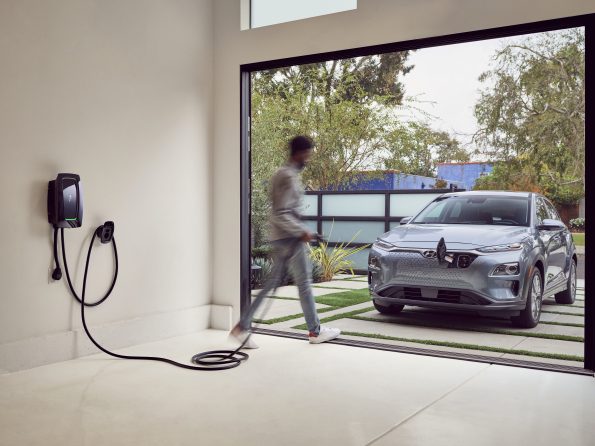Electric vehicle (EV) charging infrastructure is increasingly pertinent to getting the U.S. equipped for a clean transportation transition. Yet, some Americans aren’t buying into the hype because they believe powering EVs is too expensive and utility companies are overcharging. Legislation from the California Public Utilities Commission (CPUC) is tackling this issue, aiming to provide affordable charging by allowing owners to measure their energy consumption.
Initially, the state used a time-of-rates system to price EV charging at home. It wanted to incentivize owners to charge during non-peak hours. However, the method was cost-prohibitive, and many homeowners did not switch to electric cars.
Now, with the Golden State earning a 7.8% EV purchase rate, utility companies are tasked with making charging more affordable.
In August, CPUC announced that Pacific Gas & Electric, Southern California Edison, and San Diego Gas & Electric would implement a self-measuring charging system. Essentially, homeowners will be able to track their energy consumption themselves. The commission also detailed communication protocols that help utilities gather usage data from chargers.
“Submetering makes EV charging cheaper and will help spur the growth of electric vehicles throughout the state,” said Clifford Rechtschaffen, CPUC commissioner.
EV owners can sign up for two options. The first requires a second meter to determine how much power is used. The second doesn’t need another meter, but usage is monitored by “submetering” through the charger and tacking on a peak-hours fee for powering up during the busiest and most-strained periods. This fee is added to a home’s electricity bill.
The main theme of CPUC’s new self-measurement policy is pushing owners to charge during off-peak hours. With 15% of new-vehicle purchases being electric cars in the last quarter of 2022, the need to get the grid up to scale for 39 million people is crucial.
This past Labor Day weekend, electricity use was at astronomical rates due to the heat, prompting electricity providers to recommend limiting EV charging to avoid rolling blackouts. With California switching to electric-only sales by 2035 and an uptick in registrations coming, the state needs to prepare for a greater electricity need.
“Taken together, the submetering and communication protocols enable customers to realize greater electric grid benefits by allowing them to optimize charging and to participate in programs such as demand response — for both their and the grid’s benefit,” said Alice Busching Reynolds, CPUC president.
Other states are following California’s lead on self-energy-measurement. In August, the New York Public Service Commission approved a set of regulations allowing for self-metering with support from state utility providers. This change is a huge breakthrough since the Northeast has some of the highest electricity and EV charging rates.
In North Carolina, Duke Energy has called for approval for Ford’s F-150 Lightning electric pickup truck to provide some energy back into the grid to support other EV charging.
Some states are playing around with pilot programs allowing EVs to track charging for the cars themselves rather than the charger. These are innovative ways to support the grid while keeping owners in the loop about their rate of consumption and costs.





